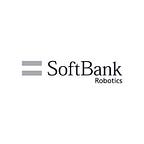Why a Safe Return to Work is Critical for Your Company Culture
As the pandemic continues, the timeline for bringing all employees back to the office remains a moving target. The New York Times recently quipped that “July is the new January,” as major employers across the country delay return-to-work plans until mid-2021.
While the headline rings true for many professionals, most organizations find themselves in a more nuanced situation — with some employees fully remote, some on location, and some working a hybrid schedule. It’s a fragmented structure that has challenged even the most vibrant company cultures, and HR leaders are eager to achieve a semblance of normalcy and re-engage employees — sooner than later.
How and when that happens, though, is critical to preserving your company’s culture.
Employees Want to Return to Work…With a Few Caveats
Quarantine fatigue is real. Research has shown that most employees miss engaging with their colleagues in person and participating in on-site company activities. But their desire to return to work is dampened by ongoing health and safety concerns.
According to a recent study by Wakefield Research commissioned by Envoy, 73 percent of U.S. employees worry that being in the physical workplace could risk their personal health and safety. In addition, the study found that 55 percent of employees would consider looking for a new job if their current employer downplayed the pandemic, failed to follow safety protocols, or pressured employees to return to work before they were ready.
At the same time, the Wakefield study showed that 90 percent of employees reported missing some aspect of working in the office, and 94 percent indicated that they would like to spend at least one day per week in the office.
Top Concerns for Employees Returning to Work
The first step to a return-to-work plan that preserves your company’s culture is to understand employee concerns. The Wakefield Research study outlined the top sources of anxiety, including:
- Not knowing whether a co-worker is sick in the office,
- Having too many people in the workplace at one time,
- Being indoors without proper ventilation,
- Inadequate or infrequent cleaning, and
- Shared high-touch surfaces, like doorknobs.
Many of these concerns can be easily addressed with clear policies and consistent communication. In addition, cleanliness concerns can be alleviated by implementing data-driven cleaning strategies to reassure employees that spaces are regularly and thoroughly cleaned. Furthermore, cleaning automation technologies make it possible to clean more deeply and consistently by taking on time-consuming rote cleaning tasks.
For example, Whiz, the autonomous vacuum sweeper from SoftBank Robotics, developed and distributed in partnership with Brain OS and ICE Robotics, can save up to 30 percent of your cleaning staff’s time, allowing them to spend more time disinfecting and sanitizing shared surfaces throughout the workplace.
Leading with Empathy
Ultimately, to preserve your company’s culture, HR leaders need to proceed with empathy, acknowledging the unique tug-of-war employees are experiencing daily — between their instinctive desire for normal social engagement and concern for their families’ safety. A successful return-to-work plan will gradually reintroduce in-person activities in a low-pressure environment while consistently reinforcing the company’s commitment to health and safety.
Contact SoftBank Robotics to learn how cleaning automation can help you execute a return-to-work strategy that protects your company culture.
Written By: SoftBank Robotics Team
